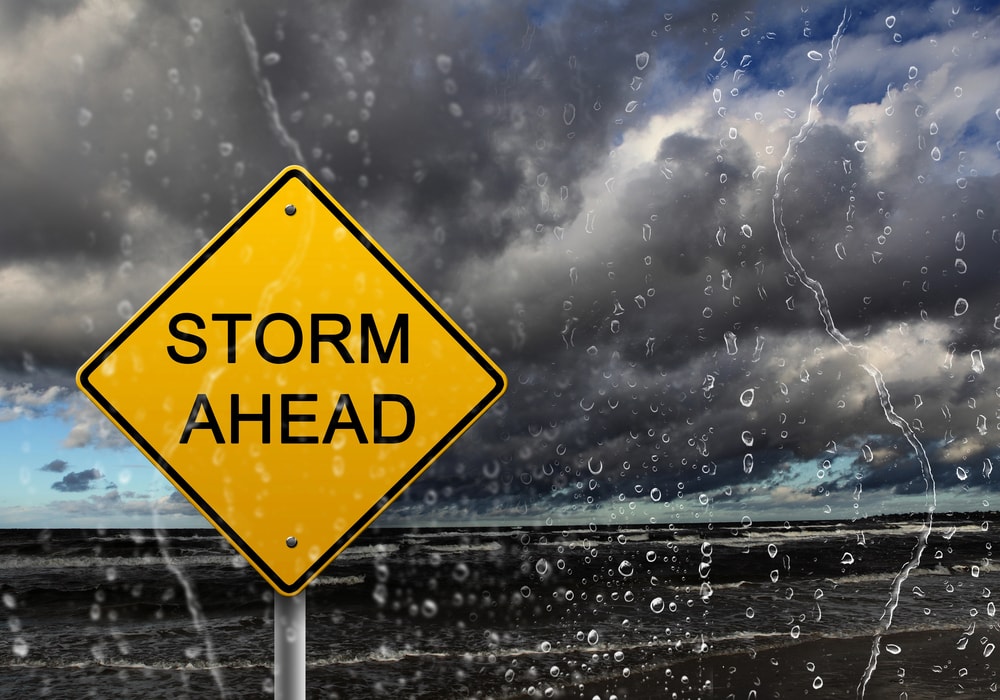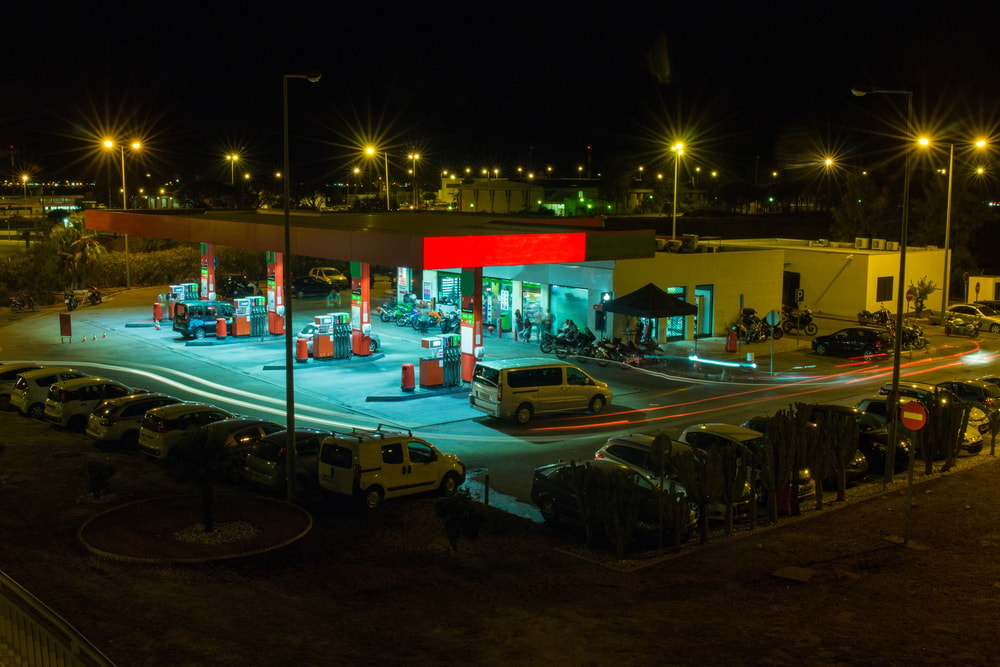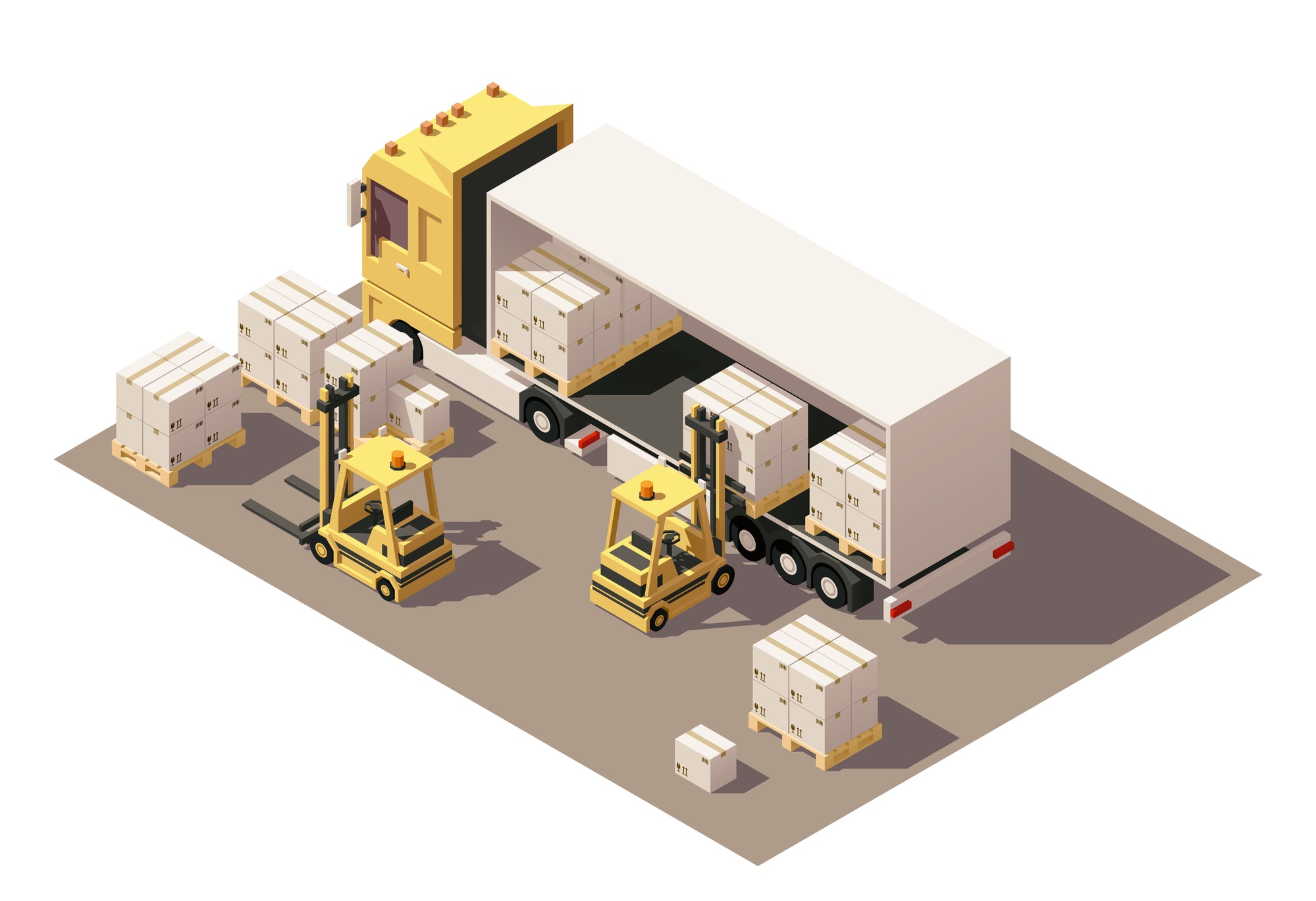Trucking in bad weather requires more attention to safety and preparation. Weather is unpredictable and even the most experienced drivers have to adapt to changing conditions to stay safe and save others on the road. Knowing how to get through different weather conditions is not just being careful it’s being proactive in preventing accidents.
Wind can affect vehicle control especially when hauling empty or lightly loaded trailers. Keeping proper lighting such as keeping marker lights clean and functional is key to visibility in low visibility conditions like fog, rain, or snow. Making sure your truck is in good condition and you know how to manage it in bad weather can be the difference between a safe trip and a dangerous one.

Safe Wind and Weather Conditions
Wind speeds and weather conditions can cause accidents and damage to your vehicle. Here are some tips for ensuring you are as safe as possible.
Using a Semi Truck Wind Chart to Determine Safe Speeds
A semi-truck wind chart is a valuable tool that helps drivers determine safe speeds in different wind conditions. These charts show a visual representation of how different wind speeds (high winds, headwinds, crosswinds) can affect a truck’s stability and control. By using a wind chart drivers can decide if it’s safe to continue driving, slow down, or pull over until conditions improve.
For example, when facing high winds the chart may suggest slowing down to maintain control especially if the winds are crosswinds which can push the truck sideways and increase the risk of rollover. Headwinds while less likely to cause a rollover can still reduce fuel efficiency and strain the engine so you may need to slow down.
The Department of Transportation (DOT) has guidelines for driving in windy conditions including speed limits based on wind speeds. In states like California where the weather can change drastically from strong coastal winds to mountainous terrain understanding and applying these guidelines is key. The DOT issues wind advisories, especially in areas prone to high winds and truckers need to follow these warnings to stay safe.

Wind Speeds and Bad Weather Conditions Affecting Truck Stability
High winds with bad weather like rain and snow can affect a truck’s stability. Wind can push against the sides of the trailer making it hard to stay straight and increasing the risk of accidents. This risk is higher when you have a heavy load as the added weight makes it harder to correct the vehicle if it starts to drift.
Rain and snow make driving conditions worse by reducing traction, increasing braking distance, and decreasing visibility. In these situations, high winds can make it even harder to control the vehicle especially when combined with slippery roads. Truckers need to adjust their speed to account for these factors and slow down in bad conditions to stay in control and prevent accidents.

Ensuring Visibility and Signaling with Proper Lighting
Marker lights and clearance lights are key to visibility and signaling your presence on the road especially in bad weather. These lights outline the size and shape of your truck making it easier for other drivers to see you from a distance. In low visibility situations like heavy rain, fog, or snow functioning markers and clearance lights are critical to prevent accidents.
Checking and maintaining these lights regularly is important for safe operations. Here’s a step-by-step guide on how to check your marker lights:
-
Check the Lights: Before every trip walk around your truck and trailer and visually inspect all marker and clearance lights. Look for any lights that are dim, flickering or not working at all.
-
Test the Electrical Connections: If a light is not working it could be due to a loose or corroded connection. Check the wiring and connectors to make sure they are secure and free of corrosion.
-
Replace Burnt-Out Bulbs: If a bulb is burnt out replace it. For better visibility consider using LED lights which are brighter and more energy-efficient than traditional bulbs.
-
Check Light Placement: Make sure amber lights are at the front and sides of the trailer and red lights are at the back as per DOT standards. Proper placement is key to signaling and compliance.

Headlights and LED Best Practices in Low Visibility
Using headlights and LEDs effectively can make a big difference in safety during low visibility conditions like rain, snow, and fog. Here are some best practices:
-
Use Low Beams in Fog and Snow: In foggy conditions high beams can reflect off the fog and reduce visibility. Stick to low beams to see the road better and not to blind other drivers.
-
Turn on Headlights in Rain: Even during the day rain can reduce visibility. Always turn on your headlights when driving in the rain so other drivers can see you.
-
Keep Lights Clean: Dirt, grime, and road salt can accumulate on your lights and reduce their effectiveness. Clean your headlights, marker lights, and LEDs regularly to make sure they are bright and visible.
-
Check Light Functionality: Before you start your trip make sure all lights are working. Neglecting this can lead to hazardous situations on the road, especially in bad weather.

Truck Systems to Monitor and Maintain for Safety
How to Test and Maintain Air Pressure Systems
Testing and maintaining air pressure systems is critical to prevent brake failures, especially in bad weather conditions where the risk of accidents is higher. The air pressure system in a semi-truck controls the brakes and any malfunction can lead to a catastrophic failure. That’s why you should check this system regularly and make sure it’s working properly.
One of the most important tests to do is the air leak test. Here’s how to do it:
-
Park the Truck and Turn Off the Engine: Make sure the truck is on level ground, apply the parking brake, and turn off the engine.
-
Release the Service Brakes: With the parking brake still applied, fully release the service brakes by pressing the brake pedal and then letting go.
-
Check the Air Pressure Gauges: Watch the air pressure gauges on your dashboard. The pressure should remain stable and not drop more than 2 PSI in a minute for a tractor-trailer combination. If it drops more than that it’s an air leak that needs attention.
-
Listen for Audible Leaks: While watching the gauges listen for any hissing sounds which could be an air leak in the air lines or fittings.
-
Check the Dashboard Display: Modern trucks have a dashboard display that shows critical information about the air pressure system. Watch for any warning signs like low air pressure alerts and address them immediately.
Doing this test regularly will ensure your brakes will work properly and reduce the risk of brake failure in heavy rain or snow.

Predictive Maintenance Software to Prevent Accidents
Predictive maintenance software is a tool that allows drivers and fleet managers to be ahead of mechanical issues before they become big problems. This software monitors the truck’s systems including tire pressure, engine performance, and other critical components, and identifies trends that could lead to failure.
For example, in high wind conditions tire pressure drop can cause a loss of vehicle stability making it harder to control the truck. Predictive maintenance software can alert the driver of the tire pressure drop before it becomes a safety hazard so you can adjust or repair it in time.
The software also monitors engine performance and identifies irregularities that could be a problem. By addressing these issues early you can maintain normal operating conditions and reduce the risk of breakdowns or accidents, especially in bad weather.

Loads and Weight Distribution
How Cargo Weight and Distribution Affect Truck Stability
In high wind conditions, the weight and distribution of cargo plays a big role in a truck’s stability. When cargo is not evenly distributed it can cause imbalance and the vehicle can be pushed or tipped by strong winds. The higher the center of gravity the higher the risk of the truck swaying or even rolling over in severe winds.
Truckers must make sure their loads are evenly distributed across the trailer, heavier items should be placed as low as possible. This lowers the center of gravity keeping the truck grounded and reducing the impact of crosswinds and headwinds. And make sure the load is secured and doesn’t shift during transit to maintain control of the vehicle in high winds.
Tips to Adjust Loads in High Wind Conditions
When high winds are forecasted review and adjust your load to minimize the risk of accidents. Here are some tips:
Balance the Load: Distribute the weight evenly from front to back and side to side. Don’t put too much weight on one side as this can cause the trailer to tilt and be more vulnerable to wind.
Lower the Center of Gravity: Place heavier items at the bottom of the load and lighter items on top. This reduces the chance of the truck swaying or tipping over in high winds.
Secure the Cargo: Make sure all items are tightly secured to prevent shifting during transit. Shifting cargo can throw off the truck’s balance especially when combined with strong winds.
Monitor Wind Speeds: Use wind charts and local weather reports to stay informed of wind conditions along your route. If winds are too strong consider delaying your trip or take an alternate route that is more wind-protected.

Overloading Risks and How to Avoid Them
Overloading a trailer puts strain on the truck’s engine and brakes and increases the risk of instability in high wind conditions. When a trailer is overloaded the extra weight can make the vehicle more prone to swaying especially in crosswinds. This can lead to loss of control and potentially severe accidents.
To avoid overloading dangers follow the safe weight limits. Here’s how to determine and manage those limits in different weather conditions:
Know Your Max Gross Weight: Always know your truck’s maximum gross vehicle weight rating (GVWR). Going over this limit means you can’t handle the vehicle safely, especially in bad weather.
Adjust for Weather: In high wind conditions carry a lighter load than your max capacity. The lighter the load the less surface area for the wind to push against and reduce the risk of tipping.
Use Load Scales: Regularly use load scales to make sure you’re not exceeding weight limits. These scales can help you rebalance the load if needed to get better balance and stability.
Follow DOT Guidelines: The Department of Transportation (DOT) has guidelines on load limits and weight distribution that are critical for safe driving. Following these guidelines not only makes you compliant with regulations but also safer in bad weather conditions.

Road Emergencies
Actionable Steps for Truckers in High Winds and Bad Weather
Driving in high winds or bad weather can quickly turn into an emergency. Knowing what to do can mean the difference between a minor delay and a big accident. Here are the actionable steps for truckers in challenging weather conditions:
Slow Down Now: If you’re driving in high winds or bad weather slow down. Slower speeds give you more control of the vehicle and more time to react to changing conditions.
Assess the Situation: Evaluate the weather. If the winds are too strong or the weather is too bad to drive safely find a safe place to pull over. Don’t stop on the shoulder if possible as you can get hit by other vehicles.
Stay Informed: Monitor weather reports and alerts. Use your truck’s radio or a weather app to stay updated on conditions ahead. If a weather warning is issued take it seriously and adjust your plans accordingly.
Turn On Hazards: When visibility is low due to weather conditions turn on your hazards to make your truck more visible to other drivers. This is especially important if you need to slow down or stop.
Call Dispatch or Emergency Services: If you have an emergency such as an accident caused by high winds or bad weather call your dispatch to report the situation. If needed call emergency services for assistance.
Know When to Stop: If conditions are too bad such as strong crosswinds that can tip your truck over it’s better to stop and wait for the weather to improve. Safety always comes first.
LED Road Flares and Warning Signs
In an emergency making your truck visible to other drivers is key, especially in low visibility conditions like fog, rain, or snow. LED road flares and warning signs can be a lifesaver in these situations to alert other drivers of your presence and prevent further accidents.
LED road flares are highly recommended because they are more durable, brighter, and longer lasting than traditional flares. They are also safer as they don’t have an open flame so it’s good for all weather conditions. Here’s how to use them:
Choose High-Quality LED Flares: Get high-quality LED flares that are waterproof, shock resistant, and have a long battery life. These flares should be bright enough to be seen from a distance even in bad weather.
Position Flares Correctly: When deploying LED flares place them at intervals leading to your truck. Start by placing the first flare 100 feet behind your vehicle then another 200 feet further back. This staggered placement gives approaching drivers enough warning of your presence.
Use Reflective Warning Signs: In addition to flares use reflective warning signs or triangles. These can be placed alongside the flares to make you more visible, especially in low-light conditions.
Check Your Emergency Kit Regularly: Make sure your emergency kit including LED flares, warning signs, and other safety equipment is always in working order. Replace batteries and worn-out equipment as needed to be prepared for any situation.

Summary
Driving in bad weather requires more than skill it requires preparation, awareness, and the right tools. Throughout this article, we’ve covered the safety measures every trucker should take. Using wind charts to determine safe speed, proper lighting for visibility, and keeping your truck road ready through regular maintenance are all must-dos to reduce the risk of accidents.
By following these safety measures you not only protect yourself but also the others on the road. Whether it’s balancing your load to improve stability in high winds or using LED road flares in emergencies these are must-do’s for safe trucking.
